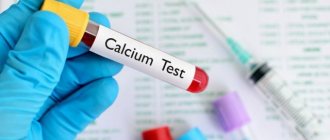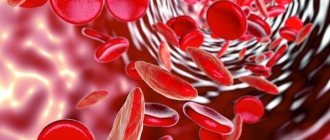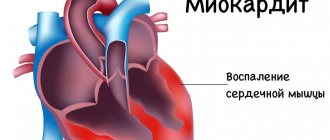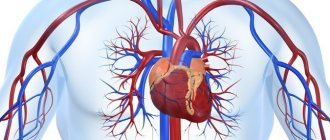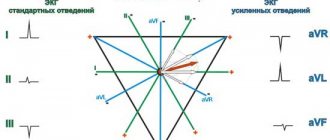How does a lack of potassium manifest itself in the body?
Potassium is one of the elements necessary for the body. Its main carrier is water, and since the body is composed primarily of water, it is obvious that potassium must be everywhere. It performs many functions in the body. Stimulates insulin secretion, promotes the burning of proteins and carbohydrates. He is very needed. Its deficiency can be very unfavorable for the body, so it is worth knowing how to recognize this condition and, of course, how to counteract it. Be sure to read the helpful tips in this article.
Hypokalemia
The normal concentration of potassium in blood plasma is 3.5–5.5 mmol per liter.
The form of electrolyte imbalance in which the level of this element is less than the lower limit of normal is called hypokalemia. Potassium ions are found in the blood, brain, heart, kidneys, liver, muscles and bone tissue. Potassium is involved in the physiological processes of the body - the functioning of the heart, metabolic reactions, muscle contraction, and the conduction of nerve impulses. Potassium ions activate enzymes located inside cells, increase the tone of smooth muscles, participate in the regulation of intercellular contacts, maintain normal blood pressure and stable kidney function, ensure constant acid-base balance, and much more. Accordingly, a deficiency (as well as an excess) of this important element leads to the development of a number of serious disorders in almost all organs and systems of the body.
Causes of hypokalemia
A relative physiological cause of the development of potassium deficiency is considered to be insufficient intake of the macronutrient from food, which is often observed in people who follow strict diets or have a poor diet.
Pathological hypokalemia in children and adults occurs for various reasons:
- Gastrointestinal problems. The electrolyte balance is disrupted by various gastrointestinal pathologies, including profuse diarrhea or prolonged vomiting.
- Excessive intake of potassium into cells. Against the background of some pathologies occurring in the body, there is a movement of potassium ions from the intercellular space into the cells. This is possible with an excess of catecholamines, metabolic alkalosis (a shift in pH levels to the alkaline side), the use of large doses of insulin in patients with diabetic ketoacidosis, alcohol abuse, familial periodic paralysis, and an overdose of certain vitamins (for example, folic acid).
- Impaired renal tubular function. Due to this pathology, potassium transport is disrupted and its excretion increases. This is possible with renal acidosis, renal artery stenosis, Barter syndrome, interstitial nephritis.
- Hyperaldosteronism. The excretion of potassium ions by the kidneys stimulates aldosterone. The condition when the adrenal cortex secretes large amounts of aldosterone is called hyperaldosteronism. It can be primary, arising from an aldosterone-producing adrenal tumor, and secondary, caused by a renin-secreting tumor, chronic renal failure or renovascular hypertension due to occlusion of the renal artery.
- Endocrine disorders. Hypokalemia often develops with congenital dysfunction of the adrenal cortex, Itsenko-Cushing syndrome, and thyrotoxicosis.
- Treatment with certain medications. Most often, potassium deficiency occurs while taking thiazide and loop diuretics. Other drugs that can cause hypokalemia are bronchodilators, beta-agonists, some antibiotics (especially penicillins), tocolytics, theophylline, etc.
Other possible causes: use of a nasogastric tube, extensive burns, hypomagnesemia, hypernatremia, cirrhosis of the liver, lymphoblastic leukemia, diabetes insipidus.
Prevalence
As shown by an analysis of a specialized database of the laboratory service of the La Paz University Hospital (Madrid, Spain), the incidence of severe (serum potassium level <2 mmol/l) drug-induced hypokalemia in medical institutions was 4.64 per 10,000 visits in 2009 versus 4.32 per 10,000 visits in 2010 [16]. Drug-induced hypokalemia is detected in approximately 2.5% of hospitalized elderly people (≥75 years) and is accompanied by an increase in cardiovascular risk [17].
Drug-induced hypokalemia is caused by many drugs: diuretics, adrenergic agonists, drugs used for chemotherapy of malignant neoplasms, corticosteroids, antibacterial drugs, etc. (Table 1). The incidence of drug-induced hypokalemia when taking different drugs varies significantly. Thus, according to [18], antibacterial drugs cause hypokalemia in 47.5% of cases (the most common among them: ceftriaxone - 24.5%, azithromycin - 10.5%), drugs for chemotherapy of malignant neoplasms - in 11.6 % (most often: cisplatin - 28.5%, cyclophosphamide - 14.2%), GCS - 9.1% (most often: hydrocortisone - 45.4%, prednisolone - 18.1%), b2-adrenergic receptor agonists - in 7.5%, diuretics - in 6.6% (the most common among them: furosemide - 75%, hydrochlorothiazide - 25%). The most severe hypokalemia (1.5–2 mmol/l) among all antibacterial drugs was observed with amphotericin B and ceftriaxone [18]. According to other data [19], the most common cause of hypokalemia due to potassium loss through the kidneys in hospitalized patients (41.7% of all cases of hypokalemia) was the use of diuretics.
Symptoms of hypokalemia
The development of hypokalemia is accompanied by rapid fatigue, muscle weakness (especially in the lower extremities), and sometimes muscle cramps.
If the concentration of potassium ions decreases to 3.0 mmol/l and below, the following are added to the described symptoms:
- neurological and mental disorders - paresthesia, irritability, deterioration of concentration, apathy, etc.;
- functional myocardial failure, heart rhythm disturbances (people receiving cardiac glycosides have a high risk of developing life-threatening arrhythmia);
- gastrointestinal pathologies - nausea, vomiting, constipation, heaviness in the epigastric region, dynamic intestinal obstruction.
Severe acute hypokalemia leads to the development of ascending paralysis affecting the diaphragm and intercostal muscles, which requires the patient to be connected to a ventilator.
Interaction of potassium with the kidneys
The interaction between potassium and the kidneys is not as simple as with other organs. On the one hand, potassium is an important nutrient that reduces the risk of urolithiasis, since the salts contained in potassium reduce blood acidity.
And if you look at this “couple” from the other side, then there is a category of people who are prohibited from taking potassium without the supervision of a doctor. This is a group of people suffering from kidney failure. In such people, due to their illness, hyperkalemia develops, which, if ignored, can even lead to unexpected cardiac arrest.
Diagnosis of hypokalemia
Arrhythmic pulse and muscle hypotension are the main symptoms that suggest hypokalemia. To confirm the diagnosis, the following examinations are prescribed:
- Lab tests. A study of the acid-base state of the blood, determination of the content of potassium, magnesium, calcium, sodium, urea and creatinine is required. Urine is examined for the presence of chlorine and its density is determined.
- Hormonal spectrum. A number of hormone tests are performed, including cortisol and aldosterone.
- Electrocardiography (ECG). With hypokalemia, the patient exhibits prolongation of the QT interval and the appearance of a U wave, and sometimes ventricular tachycardia or atrial fibrillation.
Additionally, if necessary, ultrasound, CT, MRI, echocardiography, angiography are performed.
Differential diagnosis is carried out with hyperkalemia, myasthenia gravis, muscular dystrophy, Guillain-Barré syndrome.
Clinical picture, diagnosis and differential diagnosis
Clinical manifestations of drug-induced hypokalemia correspond to those of hypokalemia in general and include depression, paresthesia, muscle spasm of the lower extremities, convulsions, hyporeflexia, muscle weakness, decreased myocardial contractile function, various rhythm disturbances (extrasystole, supraventricular and ventricular tachycardia), nausea, vomiting , intestinal paresis, intestinal obstruction, muscle necrosis, decreased secretion of insulin, aldosterone, polyuria, and in severe hypokalemia - respiratory depression, hypotension, severe rhythm and conduction disturbances, including ventricular fibrillation [2, 24].
To diagnose hypokalemia use [2]:
determination of potassium level in blood serum;
electrocardiography (ECG).
The most accurate and reliable method for diagnosing hypokalemia is to determine the level of potassium in the blood serum. The diagnosis of hypokalemia is made when the serum potassium concentration decreases below 3.5 mmol/l [18, 11].
There are 3 degrees of severity of hypokalemia depending on the concentration of potassium in the blood serum [25]: mild - >3.0-3.5 mmol/l, moderate - 2.5-3.0 mmol/l, severe - <2.5 mmol/l. At the same time, according to Russian experts, we can talk about potassium deficiency when its content does not exceed 4 mmol/l [2].
To obtain the most reliable results for determining the concentration of potassium in the blood serum, it is recommended to carry out blood sampling and laboratory analysis in the first half of the day on an empty stomach with mandatory adherence to the blood sampling technique. This is important because, for example, prolonged application of a tourniquet above the venipuncture area or active clenching and unclenching of a fist can lead to tissue ischemia and the transfer of potassium from cells to plasma, which will distort the results. You should also remember about daily fluctuations in the level of potassium in the blood plasma (up to 0.6 mmol/l), the lowest values are determined at night [2].
As mentioned above, potassium is primarily an intracellular ion. Extracellular fluid contains only 2% potassium, so even a slight decrease in potassium levels detected in a biochemical blood test indicates a severe potassium deficiency in the body. Thus, a decrease in the level of potassium in the blood serum by 0.3 mmol/l indicates a potassium deficiency in the body of approximately 100 mmol, thus, to correct potassium deficiency when it decreases from 4 to 3 mmol/l, it is necessary to introduce about 12,000 exogenously –16,000 mg potassium [2, 26].
ECG signs of hypokalemia are [2]: depression of the ST segment, flattening or inversion of the T wave, the appearance of a U wave, rhythm and conduction disturbances. In this case, there is a correlation between the severity of hypokalemia and the size of the T wave. Thus, with a potassium concentration of ~3.0–3.8 mmol/l, a smoothed or inverted T wave can be detected on the ECG; at a potassium concentration of ~2.3–3.0 mmol/l - prolongation of the QT interval (prolongation of the T wave), the presence of a U wave, moderate depression of the ST segment (0.5 mm), ventricular extrasystole; and with severe hypokalemia (<2.3 mmol/l) - arrhythmia of the torsades de pointes
or ventricular fibrillation. Also, in patients with potassium deficiency, supraventricular and ventricular extrasystoles, atrial and ventricular tachyarrhythmias, and atrioventricular blockades are common.
In the case of an unknown cause of hypokalemia or hypokalemia resistant to therapy with potassium supplements, it is recommended to determine the daily excretion of potassium in the urine and the concentration of magnesium and chlorine in the blood serum. It may also be useful to assess the daily excretion of bicarbonates, chlorides, and ammonia (biochemical analysis of daily urine). Thus, the detection of hypokalemia in the blood serum in combination with a decrease in the excretion of sodium and potassium and an increase in the excretion of ammonia and chlorides in a daily urine test may indicate hypokalemia caused by the loss of electrolytes through the intestines, characteristic of drug-induced hypokalemia while taking laxatives (phenolphthalein, sodium docusate, magnesium sulfate, lactulose, bisacodyl, sennosides, etc.). A similar picture can be observed against the background of loss of electrolytes due to pseudomembranous colitis caused by antibiotics [2, 8, 9, 20].
High levels of urinary secretion of sodium and bicarbonates with a low chloride content against the background of hypokalemia can be the result of vomiting, for example, associated with the intake of quinine, narcotic analgesics, drugs used in anesthesiology (nitrous oxide, physostigmine, opiates), drugs for chemotherapy of malignant neoplasms [ 20].
Differential diagnosis should be carried out with pathological conditions accompanied by excessive production of aldosterone and GCS (Cushing's syndrome, primary aldosteronism, congenital adrenal hyperplasia, hormone-producing tumors); congenital pathological conditions characterized by increased production of renin and aldosterone (Bartter syndrome, Gitelman syndrome); with a pathology characterized by increased sodium reabsorption (for example, Liddle's syndrome); diseases/conditions accompanied by prolonged vomiting, chronic diarrhea, hypersympathicotonia and/or excessive secretion of catecholamines by the adrenal medulla (obesity, insulin resistance, metabolic syndrome, diabetes, thyrotoxicosis, etc.) [2]. It is also necessary to evaluate the consumption of substances and foods that increase cortisol activity or promote the movement of potassium from the extracellular space into the cell (glycyrrhizin, licorice, caffeine, etc.) [2, 8, 9, 20].
In the differential diagnosis of drug-induced hypokalemia, the most important role is played by a thorough collection of pharmacological history in accordance with special algorithms [27].
Hypokalemia: treatment
The main goal of therapy is to stop the body losing potassium. To do this, it is necessary to eliminate the cause of hypokalemia. At the same time, the deficiency is corrected.
Treatment of hypokalemia with potassium supplements is mandatory. For mild pathological processes, medications are usually prescribed in tablet form, for example, Asparkam or Panangin. In severe cases, intravenous solutions containing potassium chloride or potassium bicarbonate are required. However, intravenous infusions are contraindicated in patients whose problem is caused by impaired potassium redistribution (with the exception of familial hypokalemic periodic paralysis), since the risk of developing rebound hyperkalemia is high.
In some cases, the use of antiarrhythmic drugs - propafenone or amiodarone - is required to eliminate arrhythmia. In case of ventricular fibrillation, defibrillation is necessary.
Risk factors for drug-induced hypokalemia
According to a study by E. Ramírez et al. [16], the only statistically significant (p<0.0001) predictor of the development of drug-induced hypokalemia is the simultaneous use of more than 5 drugs (polypharmacy), while the trigger for its development is hypoalbuminemia. Long-term use of certain drugs and their use in high doses is also associated with an increased risk of developing drug-induced hypokalemia [9, 20]. It can also be assumed that the risk of developing this pathological condition increases if the patient has diseases/conditions accompanied by hypokalemia (for example, Cushing's syndrome, gastrointestinal infections or tumors, malabsorption, hyperaldosteronism, hyperthyroidism, hypomagnesemia, renal tubular acidosis, etc.) [23] .
Popular questions about hypokalemia
What is hypokalemia?
This is a condition characterized by a decrease in plasma potassium concentration below 3.5 mmol/l.
What does low potassium in the blood mean?
The reason may be different - from insufficient intake of macronutrients from food to dysfunction of the adrenal cortex. To install it, you need to conduct a detailed examination.
How to determine the lack of potassium in the body?
There are no specific symptoms of deficiency of this element. Hypokalemia can be suspected by increasing muscle weakness, increased fatigue, and heart rhythm disturbances. Potassium deficiency can be confirmed by laboratory tests.
Pathophysiological mechanisms
Drug-induced hypokalemia, as a rule, is based on an increase in its losses through the gastrointestinal tract and kidneys (the total amount of potassium in the body decreases), as well as changes in the concentration of extra- and intracellular potassium (see Table 1) [8]. Activation of Na+/K+-ATPase, inhibition of potassium channels, or activation of Na+-H+ metabolism are some of the most common mechanisms for the development of drug-induced hypokalemia due to changes in potassium concentrations inside and outside the cell [8]. For example, when xanthines and insulin are used, Na+/K+-ATPase is activated and extracellularly located potassium moves into the cell [12]. The total amount of potassium in the body does not change, however, due to electrolyte imbalance, the risk of developing undesirable reactions, especially from the heart (arrhythmias) increases [8]. The use of chloroquine in clinical practice is also associated with the risk of hypokalemia caused by the transition of extracellular potassium into the cell, with a high incidence (~11%) of severe (<2 mmol/l) hypokalemia [8]. Other drugs, such as diuretics, laxatives, some antivirals (foscarnet, ritonavir, etc.), antibacterial drugs (penicillins, aminoglycosides), etc. (see Table 1) lead to hypokalemia, increasing the excretion of potassium from the body through the gastrointestinal tract or kidneys [8, 9, 20].
Aminoglycosides, nucleoside HIV reverse transcriptase inhibitors, sodium valproate, deferasirox, suramin, tetracyclines, cisplatin, capecitabine, carboplatin, ifosfamide, azacitidine can cause Fanconi syndrome, thereby causing hypokalemia.
Ion exchange resins such as sodium or calcium polystyrene sulfonate can chelate potassium in the intestine and thereby impair its absorption and accelerate excretion, ultimately leading to hypokalemia [20]. A combination of different pathophysiological mechanisms for the development of drug-induced hypokalemia is also possible [8].

